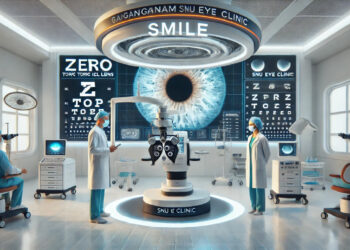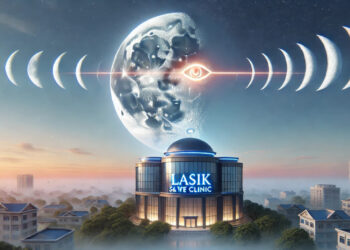In recent years, the science of Red Light Therapy has gained considerable attention and recognition for its potential health benefits. From alleviating pain to enhancing skin health, the therapeutic use of red light has become a fascinating subject of research and application. In this article, we delve into the intricacies of Red light therapy, exploring its mechanisms, benefits, applications, and much more.
I. Introduction
A. Brief overview of Red Light Therapy
Red Light Therapy, also known as Low-Level Laser Therapy (LLLT) or photobiomodulation, involves the use of red or near-infrared light to stimulate cellular function. This non-invasive treatment has shown promise in various health and wellness aspects.
B. The growing popularity and applications
As more people seek alternative and complementary therapies, the popularity of Red Light Therapy has surged. Its applications range from pain management to skincare, making it a versatile approach to overall well-being.
II. How Red Light Therapy Works
A. Explanation of light wavelengths
The science behind Red Light Therapy lies in the specific wavelengths of light used. Red and near-infrared wavelengths penetrate the skin and are absorbed by the mitochondria, the powerhouse of our cells.
B. Interaction with cellular processes
Once absorbed, these light waves trigger a series of cellular processes, enhancing the production of adenosine triphosphate (ATP). This increase in ATP provides cells with more energy to perform their functions optimally.
C. Activation of mitochondria
Mitochondria play a crucial role in the energy production of cells. Red Light Therapy activates these cellular powerhouses, leading to improved cellular function and overall health.
D. Production of ATP
The boost in ATP production not only enhances cellular activities but also contributes to various therapeutic effects, including accelerated healing and reduced inflammation.
III. Benefits of Red Light Therapy
A. Pain relief and inflammation reduction
One of the primary benefits of Red Light Therapy is its ability to alleviate pain and reduce inflammation. This makes it a promising option for individuals dealing with chronic pain conditions.
B. Skin health improvement
Red Light Therapy has shown remarkable results in improving skin health. It stimulates collagen production, reduces wrinkles, and promotes a more youthful appearance.
C. Enhanced muscle recovery
Athletes and fitness enthusiasts are turning to Red Light Therapy for quicker muscle recovery after intense workouts. The increased ATP production aids in the repair and regeneration of muscle tissues.
D. Potential mental health benefits
Emerging research suggests that Red Light Therapy may have positive effects on mental health, potentially aiding in conditions like depression and anxiety.
IV. Applications in Medical Field
A. Treatment of skin conditions
Dermatologists are increasingly incorporating Red Light Therapy into the treatment of various skin conditions, including psoriasis, acne, and eczema.
B. Pain management in chronic conditions
Red Light Therapy shows promise in managing chronic pain conditions such as arthritis, providing a non-pharmacological approach to pain relief.
C. Rehabilitation after surgeries
Post-surgical rehabilitation can be enhanced with Red Light Therapy, promoting faster healing and reducing the risk of complications.
V. DIY Red Light Therapy
A. At-home devices and their effectiveness
The market offers a variety of at-home Red Light Therapy devices. Understanding their effectiveness and proper usage is crucial for achieving optimal results.
B. Safety precautions and guidelines
While Red Light Therapy is generally safe, it’s essential to follow safety precautions and guidelines, especially when using at-home devices.
VI. Research and Studies
A. Scientific evidence supporting Red Light Therapy
Numerous studies support the efficacy of Red Light Therapy in various applications, providing a scientific basis for its growing popularity.
B. Ongoing research and future potential
Researchers continue to explore new avenues for Red Light Therapy, uncovering its potential in areas like neurodegenerative diseases and immune system modulation.
VII. Comparisons with Other Therapies
A. Contrasting Red Light Therapy with infrared and UV therapies
Understanding how Red Light Therapy differs from other light therapies helps individuals make informed choices based on their specific needs.
B. Advantages and disadvantages
Every therapy has its pros and cons. Examining the advantages and disadvantages of Red Light Therapy provides a comprehensive perspective for potential users.
VIII. Choosing the Right Red Light Therapy Device
A. Factors to consider
From wavelength to device specifications, various factors influence the effectiveness of Red Light Therapy. Choosing the right device involves considering these factors.
B. Popular devices in the market
An overview of popular Red Light Therapy devices helps readers make informed decisions when selecting a device for personal use.
IX. Success Stories and Testimonials
A. Real-life experiences with Red Light Therapy
Reading about the positive experiences of individuals who have incorporated Red Light Therapy into their routines adds a personal touch to the scientific aspects.
B. Positive outcomes in various health aspects
Success stories encompass a range of health benefits, from improved sleep quality to enhanced athletic performance.
X. Precautions and Side Effects
A. Potential risks and contraindications
While Red Light Therapy is generally safe, it’s essential to be aware of potential risks and contraindications, especially for individuals with certain medical conditions.
B. Consultation with healthcare professionals
Seeking advice from healthcare professionals ensures that Red Light Therapy is a suitable option, considering individual health conditions.
XI. Trends and Innovations
A. Evolving technologies in Red Light Therapy
Advancements in technology continue to shape the landscape of Red Light Therapy, introducing innovative devices and treatment approaches.
B. Emerging trends in the health and wellness industry
The integration of Red Light Therapy into broader health and wellness trends reflects its evolving role in preventive care.
XII. Incorporating Red Light Therapy into Daily Life
A. Practical tips for regular usage
Simple yet effective ways to incorporate Red Light Therapy into daily routines make it accessible for individuals with busy lifestyles.
B. Integrating into fitness and skincare routines
Fitness enthusiasts and skincare enthusiasts can seamlessly integrate Red Light Therapy into their existing routines for enhanced benefits.
XIII. Addressing Common Misconceptions
A. Debunking myths surrounding Red Light Therapy
Dispelling common myths ensures that individuals approach Red Light Therapy with accurate information and realistic expectations.
B. Clarifying doubts for informed decisions
Addressing common doubts and concerns helps readers make informed decisions about incorporating Red Light Therapy into their lives.
XIV. Future Prospects and Developments
A. Anticipated advancements in Red Light Therapy
The future holds exciting possibilities for Red Light Therapy, with anticipated advancements that may expand its applications and effectiveness.
B. Potential new applications
Researchers are exploring new avenues for Red Light Therapy, uncovering potential applications in areas yet to be fully explored.
XV. Conclusion
A. Summarizing key points
Red Light Therapy, with its scientific backing and diverse applications, emerges as a promising approach to holistic well-being.
B. Encouraging exploration of Red Light Therapy
Encouraging readers to explore Red Light Therapy for themselves and experience its potential benefits firsthand.



